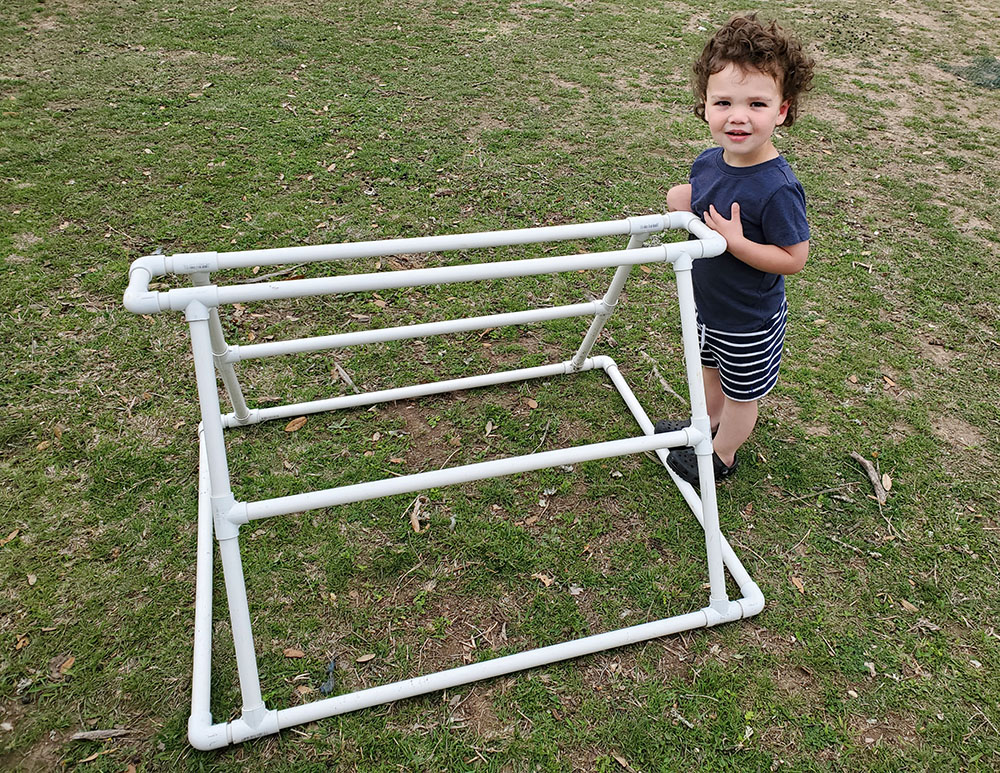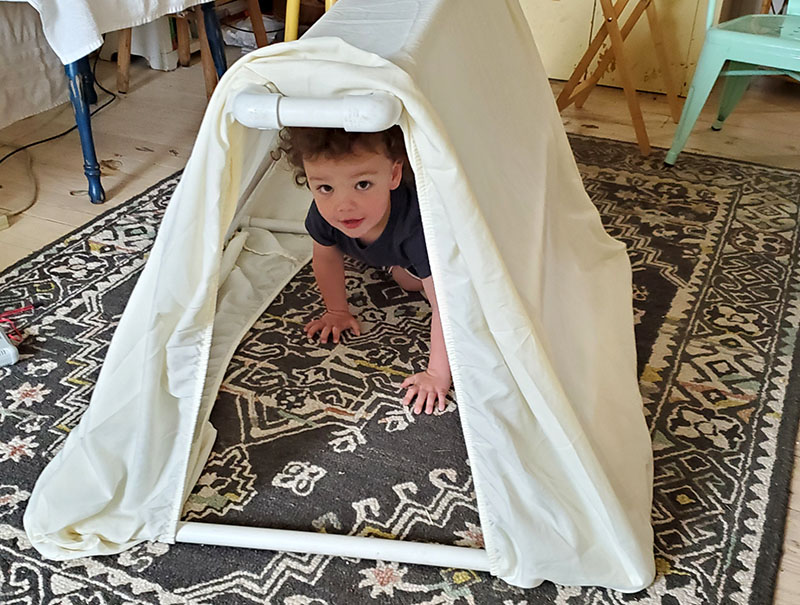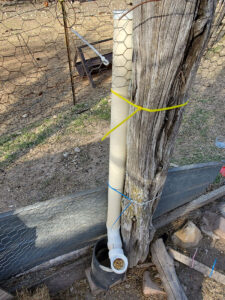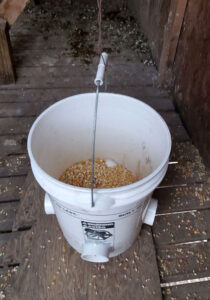April 7, 2021–The need to purchase several sticks of PVC to repair some plumbing after the ice storm reinforced my interest in this magical material.
For do-it-ourselfers, PVC ranks on the top shelf alongside rolls of duct tape, bags of zip ties, and lengths of baling wire as the basic building blocks of the universe. In a perfect world, we’d all be made of this stuff. Doctors could fix a broken arm with a strip of duct tape or perform a heart bypass with a piece of half-inch PVC and two 90-degree joints.
It’s amazing to think that while PVC–or polyvinyl chloride–was first discovered in 1835, it wasn’t until 100 years later that people figured out what to do with it. In the 1930s the US Navy was using it to replace rubber insultation on electrical wiring. After WWII, industrial uses exploded, and soon manufacturers had figured out how to turn it into a powder that could be mixed and extruded into seamless pipes. It’s been carrying our water ever since, as it is cheap, flexible, and resistant to chemicals, corrosion, and sunlight.
PVC is so versatile it has become the Lego building block of backyard inventors. Like me.
I’ve built poultry feed delivery systems, allowing me to stand outside the run while filling feeders. It worked. I also built a bike rack that sits in my pickup bed to hang my bike on. It didn’t work. But the great thing about PVC is that it is never wasted. When you need a piece of half-inch to mend a broken pipe, you just recycle it and save a trip to the hardware store.
When my friend ran for office he and a buddy figured out a way to suspend campaign signs inside a PVC frame, using zip ties, course. It not only showed them off nicely, installation was a snap. We just slid the whole contraption down over t-posts for the big ones and rebar for the small yard signs. Rebar, by the way, is another essential element in the Periodic Table of Construction Elements.
I’m sure you can find online videos showing how to build amazing contraptions from PVC. But I have more fun trying to come up with designs in my head as I fall asleep. Just one example is my kid’s tent.
I start with a finished design then work backwards to figure out how to arrive there using off-the-shelf pieces of PVC. For example, how can you form a tent’s triangle end piece, when the only angles provided in the fittings are 90 and 45 degrees? I finally came up with a workaround that involved using two cross pieces. After building the design in my head, the next challenge is cutting out the pieces using the least number of 10-foot lengths. You get bonus points if you can do that with no pipe left over. The tent worked out this way, without even needed to resort to fractions of an inch. It just feels more satisfying when that happens.
Here’s the recipe if you want to try it:
Materials:
3 10-foot sticks of 3/4 PVC
12 Tee joints
8 90-degree joints
Directions
Cut two of the 10-foot sticks into eight 30-inch lengths (four from each stick)
Cut one 10-foot stick into:
-eight 12-inch lengths
-two 4-inch lengths
-eight 2-inch lengths
If you made the right cuts, that should use up every inch of the 3 sticks, with none left over.
Then simply fit all the pieces together, so it looks like the photo. It’s a 3D puzzle! I didn’t use pipe glue, so I could take it apart. But to give it more stability while preserving the ability to tear it down when your spouse tires of tripping over it in the middle of the living room, you can glue up each long side, and leave the connecting pipes loose so it can be pulled apart and laid flat.
Serendipitously, this size is just right to allow a fitted twin sheet to drape over it. Makes a dandy tent. And once the kids outgrow it, it makes a handy drying rack for wet towels.
And as a last resort, you can always salvage the PVC for actual plumbing. Like I said, it’s a magical material.




